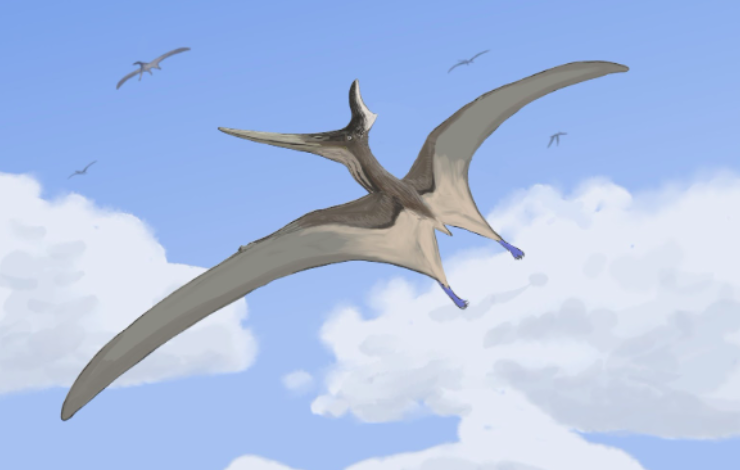23-11-2022

An international group of scientists describe the first pterosaur remains from Angola, an assemblage of fourteen bones from the 68 million years old marine deposits in the coast of Namibe Province. Far from a complete animal, 14 wing bones were recovered but that was enough for the scientists to confirm that it's a new species to Science. This 4.5 wing span species was named using a local Nhaneca language: Epapatelo otyikokolo meaning “winged lizard”. Winged lizard is also the meaning of pterosaur.
The supervision of the study was conducted by Octávio Mateus, professor and researcher at NOVA School of Science and Technology, who found and collected most of the specimens, and it was the topic as Master in Paleontology thesis in NOVA University of Lisboa by Alexandra Fernandes, first author of the study.
Other authors included Louis Jacobs and Michael Polcyn from the Southern Methodist University in USA, Andrés Brian from University of Sheffield, and Olímpio Gonçalves of the Universidade Agostinho Neto in Angola.
The fossil was prepared in the laboratory of FCT NOVA and Museu da Lourinhã, where the fossil can be seen in Museu da Lourinhã before returning to Angola. The study, published in the journal Diversity, also recognized a new group of Cretaceous pterosaurs, called Aponyctosauria.
Late Cretaceous pterosaurs are rare in Sub-Saharan Africa and throughout the Southern Hemisphere. This fossil assemblage provides a first glimpse of Angolan pterosaur paleobiodiversity providing further insight into the Gondwanan ecosystems of the Upper Cretaceous.